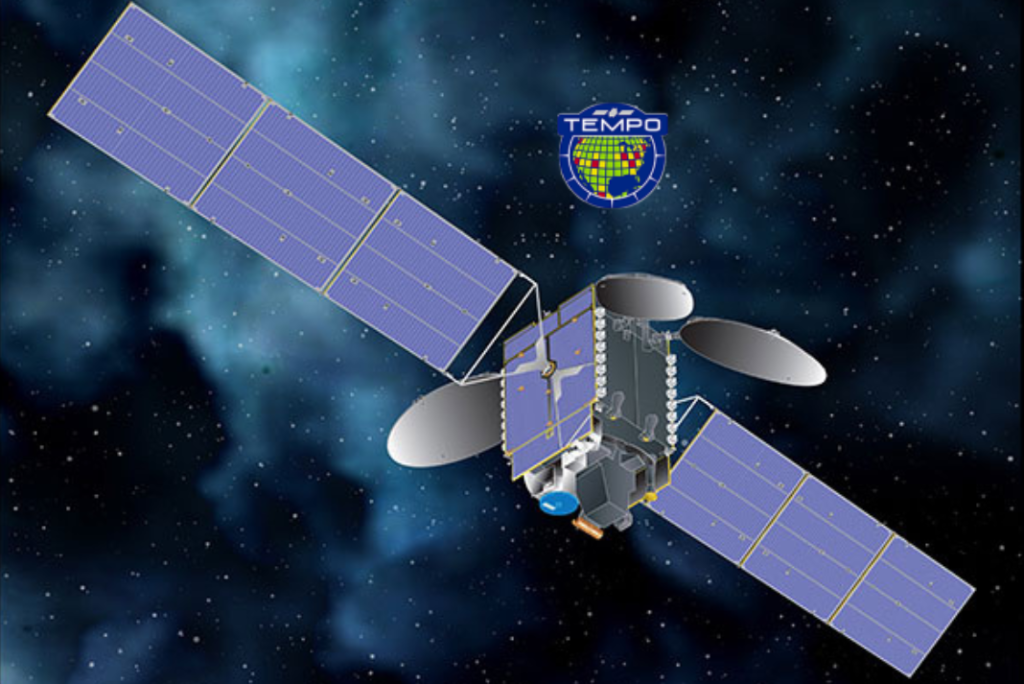Air pollution is a severe problem in North America, with cities such as Los Angeles, Mexico City, and Houston ranking among the most polluted cities globally. Air pollution poses severe health risks, particularly for the urban population. The World Health Organization estimates air pollution to be the cause of around seven million premature deaths annually. People in most regions of North America currently need more resources to know when their local air is clean. To address this challenge, NASA and the Smithsonian Astrophysical Observatory have partnered to launch TEMPO (Tropospheric Emissions: Monitoring of Pollution), a first-of-its-kind satellite mission designed to detect and measure air pollution levels in real-time over North America.
The TEMPO mission is part of NASA’s Earth Venture Instrument program. TEMPO will launch from Cape Canaveral Space Force Station on a SpaceX Falcon 9, piggybacking on a commercial geostationary communication satellite, Intelsat 40e, that will be placed 22,235 miles directly over North America. TEMPO’s ultraviolet and visible light sensors could monitor daily ozone, nitrogen dioxide, sulfur dioxide, formaldehyde variations and tropospheric aerosols.
Researchers could use the collected data stream to improve pollution emission inventories, evaluate effective emission control and mitigation strategies at point-of-origin, and monitor population exposure. It would monitor the dynamicity of air pollutants every daylight hour across the continent against other orbiting air-quality monitoring systems that observe air pollution at a particular location once a day.
Moreover, TEMPO will publically provide air quality products and improve air quality forecasting. The instrument’s optical system will have a spatial resolution of four square miles, much higher than the current satellite capabilities’ spatial resolution of about 155 square miles. Its higher resolution would enable TEMPO to directly differentiate between highly and lowly polluted areas and pinpoint sources of air pollutants like factories or farms.
The mission will be critical in addressing the air pollution crisis in North America. TEMPO can deliver air quality forecasting and public alerts when levels of particulate matter and volatile organic compounds are exceptionally high.
TEMPO’s North American scale is part of a larger picture of other pollution-monitoring satellites worldwide. The Korea Aerospace Research Institute launched its GEO-KOMPSAT-2B satellite in 2020. The European Space Agency may launch its Sentinel-4B satellite in 2023. This constellation of international satellites will scan air pollution levels across North America, Asia and Europe.
Real-time pollution monitoring capabilities can provide invaluable data to improve air quality forecasting, evaluate emission-control strategies, and help guide policymakers in mitigating the harmful effects of air pollution. Indian space ecosystem should think of building such an instrument, which could easily be launched on a geostationary satellite using the LVM-3.





